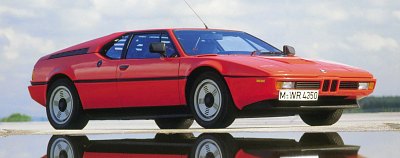 M1 holds many firsts in the
history of BMW. It was the company's first mid-engined sports car and
still the only one until today. It was the first BMW supercar capable
of rivaling the strongest Ferrari and Porsche. It was the company's
first M-car, and the only M-car not derived from existing mass
production models. Its M88 inline-6 engine was BMW's first 4-valve per
cylinder engine for road use, and one of the firsts of the world. In
later years, the engine would give birth to M5, M635CSi and, in
four-cylinder form, M3. M1 was therefore the father of all M-cars.
To a mass production manufacturer, building a low volume supercar does not make much business sense. In fact, BMW created the M1 for racing in first mind. In the mid-70s, it had already dominated touring car racing with 3.0CSL. Naturally, the next step would be Group 5, the highest category GT car racing of the day (note: Group 6 was reserved for purpose-built prototype race cars). In 1976, BMW's Motorsport department started the M1 project. 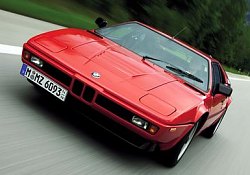 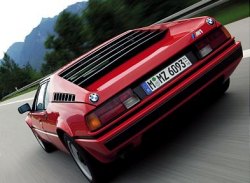 The regulations of Group 5 required to build at least 400
cars for homologation. As BMW did not have the facilities, expertise
and supply chains for low volume production, it subcontracted the
assembly work to Lamborghini in Italy. The car had a tubular spaceframe
chassis and glassfiber body for high strength and lightweight. The
double-wishbone suspensions with adjustable geometry were designed by
Giampaolo Dallara (the chassis expert behind Lamborghini Miura and Ford
GT40). Exterior design was by another Italian, Giorgetto Giugiaro.
Giugiaro gave M1 a memorable shape with low stance and wedge profile.
The flying buttresses with black ventilation flaps at either side were
trademarks of the car.
In contrast, the 3453cc twin-cam 24-valve inline-6 was pure German. Codenamed M88, it was built by the Motorsport department based on the M30 of 635CSi. Apart from the edge-leading 24-valve cylinder head, it got race car-style individual throttle, large bore intakes and dry-sump lubrication. Ignition was by electronics while fuel was supplied by mechanical injection. The road car engine produced 277 horsepower reliably and a useful 239 lbft of torque. It was mounted longitudinally behind the cockpit and coupled to a ZF 5-speed gearbox. The Group 4 racing M1 was tuned to produce 470 hp while the Group 5 racer with a twin-turbo 3.2-litre engine was even good for 850 hp. 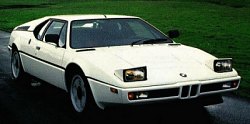 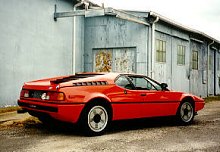 According to a road test conducted by Autocar in 1980, the road car could sprint from 0 to 60 mph in 5.5 seconds and top 162 mph, amazing for a naturally aspirated engine with 6 cylinders. This must thank to the 1300 kg kerb weight and the close-ratio gearbox. In straight line, M1 could beat the contemporary 12-cylinder supercars like Ferrari 512BB and Lamborghini Countach LP400S. Only Porsche 911 Turbo 3.3 and Aston Martin V8 Vantage were marginally quicker. However, none of them could match the M1 in corners. The M1 had everything a race car needed: lightweight, mid-engine balance, low center of gravity and race car-style suspensions. Like a modern GT40, it was built to the physics governing race cars, therefore it cornered without the bulkiness of the big Aston, Ferrari and Lamborghini, and much cleaner than the rear-engined Porsche. But perhaps the most surprising was its user-friendliness: the straight-6 was tractable and reliable, the ride surprisingly supple and the cabin was also very practical - complete with leather, air-con, electric windows and mirrors and good visibility (for a mid-engined supercar). It was one of the rare cars that combined user friendliness, driving excitement and supercar performance in one package. 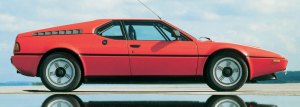 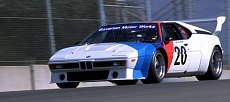 Originally, M1 was planned to be assembled by Lamborghini in Sant’ Agata. Unfortunately, at the time Lambo was stuck by financial problem and the project stalled. As a result, BMW asked three companies for help: an Italian firm called Marchesi produced the tubular space frame chassis, then transported to Italdesign for adding the glassfiber body and got it painted. The subassembly was then shipped to Germany and underwent final assembly by a coachbuilder called Baur. Finally, the finished cars were sent to BMW's Motorsport department for testing. Unfortunately, when the M1 finally launched in 1979, FIA had already revised the rules for Group 5: instead of requiring to complete 400 road cars in 24 months, now it required all these cars must be built before obtaining homologation. That was a massive blow to BMW because it would take 2 more years to do so. The M1 could only attend a few independent races under unfavourable classification. Admittedly, in these races the Group 5 M1 was proved to be unreliable and slower than the dominating Porsche 935. As a result, BMW changed its plan to concentrate on Group 4. Before obtaining homologation, it cooperated with FIA to launch the "Procar" series - a one-make championship held on racing weekends as a support for F1 events. It featured many contemporary F1 drivers, such as Niki Lauda and Nelson Piquet who won the 1979 and 1980 championship respectively, all competing in Group 4-spec M1s. It was good for publicity as well as allowed BMW to fine tuned the M1. When the car finally got homologation for the 1981 season, it started winning some races. But that was already too late, because from 1982 both Group 4 and Group 5 were replaced by Group B. This ended the short and unfortunate racing life of M1. A total of 457 cars were built, 400 of which were road cars. Despite of Ferrari-matching price, every M1 was sold at a considerable loss. 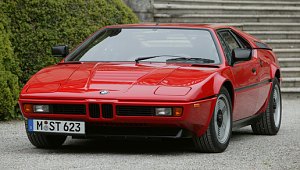 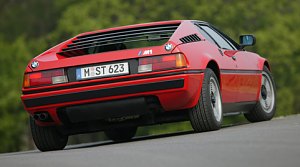 |